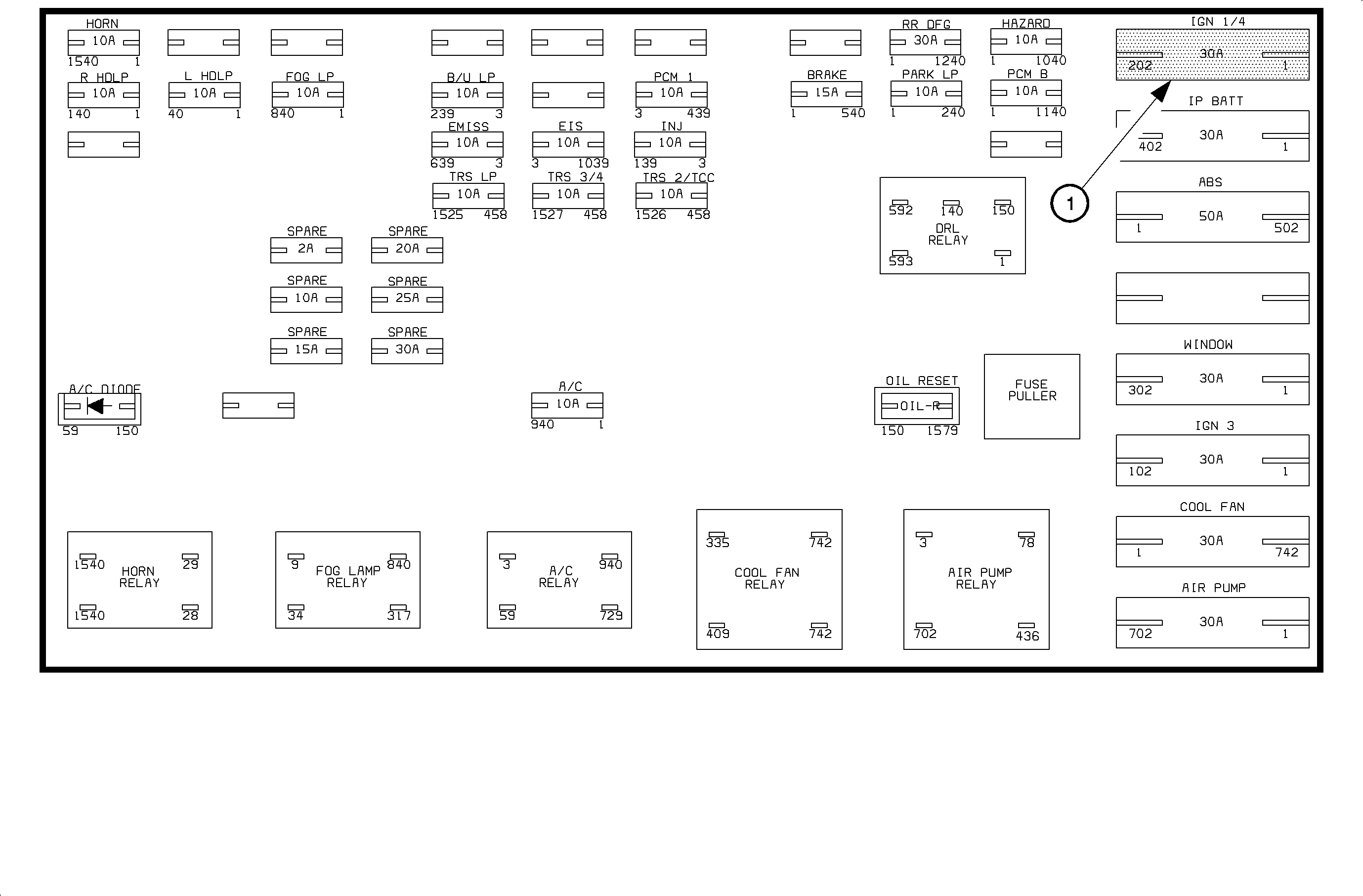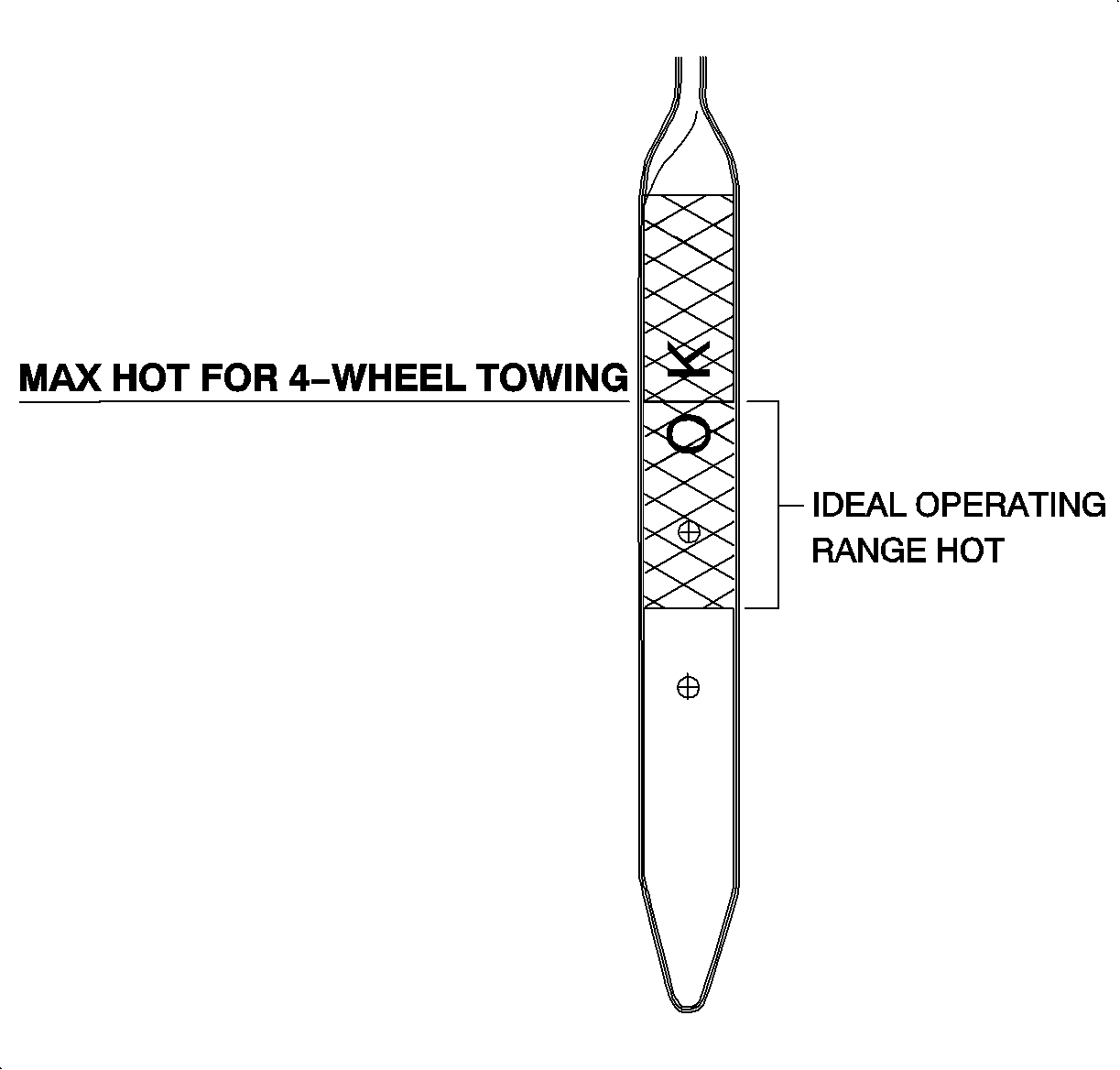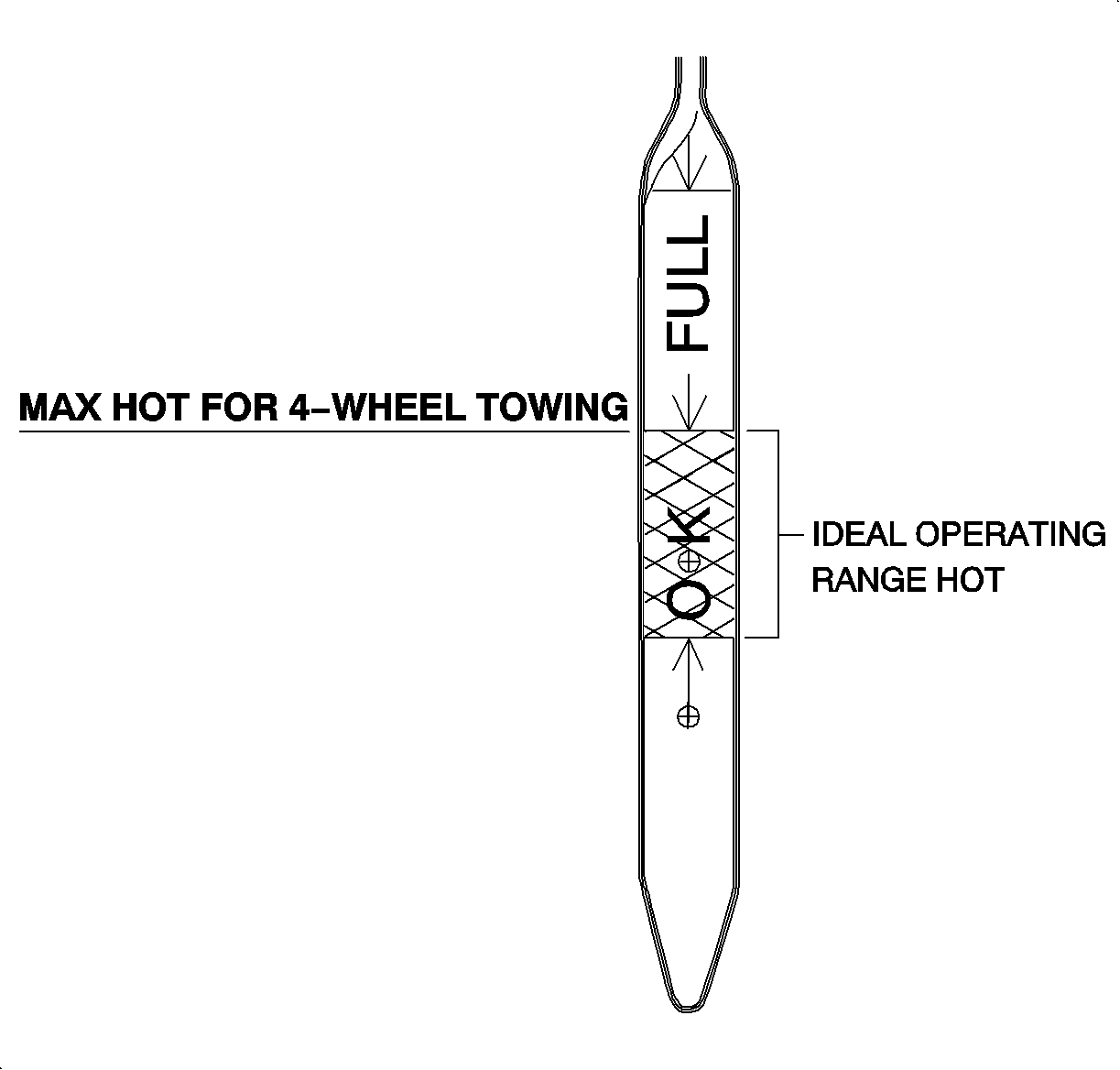

When removing fuse, pull
fuse straight up. Do not rock fuse from side to side or terminal damage may result.Notice
The underhood fuse block cover must be re-installed
properly to ensure a good seal from moisture and dirt.Notice
1991 - 2002 Saturn S-Series vehicles equipped with an automatic transaxle
The purpose of this bulletin is to provide guidelines to follow when towing a Saturn S-Series vehicle, equipped with an automatic transaxle, with all four wheels on the ground (also known as flat towing).
The information on page 2 in this bulletin is to be followed for all Saturn S-Series vehicles.
The information on page 2 and 3 in this bulletin provides the proper procedure for checking the automatic transaxle fluid for all Saturn S-Series vehicles and should be followed for all Saturn S-Series vehicles being flat towed.
The information on page 4 in this bulletin provides the proper procedure for fuse removal and other towing preparations for 2000 - 2002 Saturn S-Series vehicles.
To prevent damage to the automatic transaxle when
towing a Saturn S-Series vehicle on all four wheels, make sure automatic transaxle
fluid is no higher than "MAX HOT FOR 4-WHEEL TOWING" level or no lower than "ADD HOT"
level shown on the dipstick. Too much or too little automatic transaxle fluid may
damage the automatic transaxle when towing a Saturn S-Series vehicle on all four wheels.
This is especially true if the automatic transaxle is over-filled with automatic transaxle
fluid.Notice


1991 - 1998 MODEL YEAR DIPSTICK


1999 - 2002 MODEL YEAR DIPSTICK
The following guideline should be used before towing a S-Series vehicle, equipped with automatic transaxle, on all four wheels (also known as flat towing).
If it is necessary to remove automatic transaxle
fluid from transaxle in order to achieve desired level for four wheel towing, it will
not be necessary to add automatic transaxle fluid when not towing vehicle, provided
transaxle fluid level falls in cross-hatched area when checked at proper temperature.Important
Due to the addition of enhanced electronics on
2000 - 2002 Model Year Saturns, it is necessary to remove a fuse prior to flat-towing.
This is to prevent battery drain during extended towing times with key On.Notice


When removing fuse, pull
fuse straight up. Do not rock fuse from side to side or terminal damage may result.Notice
The underhood fuse block cover must be re-installed
properly to ensure a good seal from moisture and dirt.Notice
When towing vehicle with all four wheels
on the ground, make sure the towing speed does not exceed 65 mph (105 km/h) or your
vehicle could be severely damaged.Notice
Don't tow the vehicle with the front drive wheels on the ground if one of the front
tires is the compact spare tire. Towing with two different tire sizes on the front
of the vehicle can cause severe damage to the transaxle.Notice
Too much or too little fluid can damage the transaxle. Be sure
that the transaxle fluid is at the proper level before towing with all four wheels
on the ground.Notice
The underhood fuse block cover must be re-installed
properly to ensure a good seal from moisture and dirt.Notice
Due to 1996 - 2002 Model Year on board
vehicle diagnostics, the potential exists for the Service Engine Soon light to illuminate
if the vehicle is started and driven immediately after being flat-towed. This is
due to a diagnostic trouble code that will set if the transaxle temperature is higher
than the engine coolant temperature during a cold start up scenario. If this happens, the light should go out after two complete engine warm up cycles.
A warm up cycle consists of starting the vehicle completely cold (ie. after sitting
overnight) and driving the vehicle a sufficient distance to allow the engine and transmission
to achieve normal operating temperature, and then allowing the engine and transmission
to cool back down to ambient temperature. If the light does not go out after two warm
up cycles, or if you notice driveability concerns, contact a Saturn Service Facility
as soon as possible as the light may be on due to other unrelated diagnostic trouble
codes.Notice
|
GM bulletins are intended for use by professional technicians,
NOT a "do-it-yourselfer". They are written to inform these
technicians of conditions that may occur on some vehicles, or to
provide information that could assist in the proper service of a
vehicle. Properly trained technicians have the equipment,
tools, safety instructions, and know-how to do a job properly and
safely. If a condition is described, DO NOT assume that the
bulletin applies to your vehicle, or that your vehicle will have
that condition. See your GM dealer for information on whether
your vehicle may benefit from the information. |

|
WE SUPPORT VOLUNTARY TECHNICIAN CERTIFICATION |
© Copyright General Motors Corporation. All Rights Reserved.